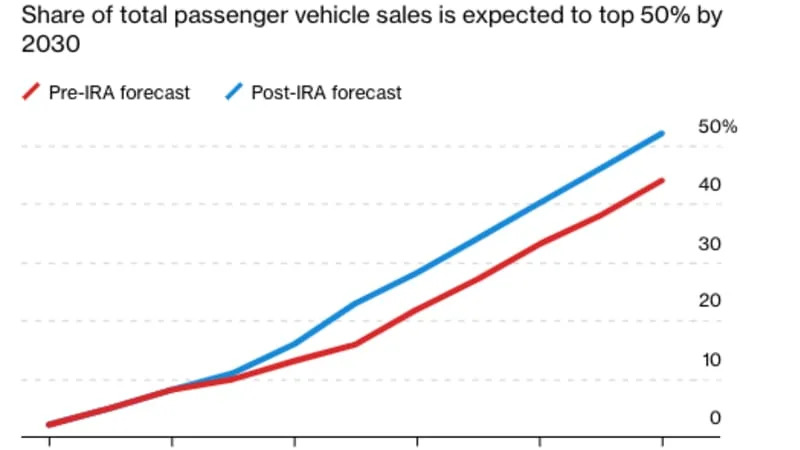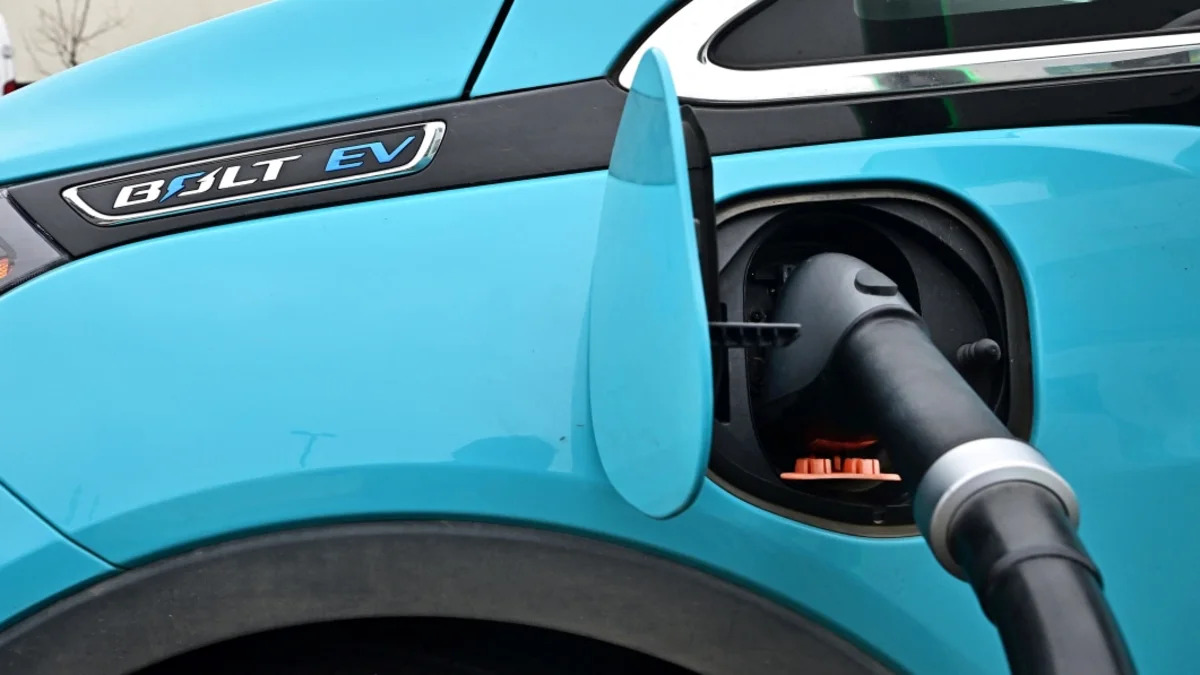The Biden administration’s plan to tighten tailpipe pollution limits on cars and light trucks — and propel electric vehicle sales — would generate as much as $1.6 trillion in savings for consumers through 2055, a top White House climate official said Tuesday.
The proposal, which would establish standards for model years 2027 through 2032 was unveiled Wednesday. It would yield big consumer benefits, White House National Climate Advisor Ali Zaidi said in an interview with Bloomberg News. That includes some $4,000 in savings during the initial years of auto ownership — doubling over the lifetime of the vehicle — and a newly compelled 80,000-mile, eight-year warranty for EVs.
The requirements will drive “astronomic benefits through public health” and “through fuel savings,” Zaidi said, amounting to at least $850 billion through 2055.

The proposed standards, the toughest in U.S. history, are designed to cap pollution allowed per mile, encouraging the sale of electric vehicles that do not produce tailpipe emissions. The limits on carbon dioxide, smog-forming nitrogen oxide and other pollutants are expected to pare respiratory ailments and premature deaths while combating climate change and unlocking consumer savings tied to maintenance.
The requirements, in combination with electric vehicle and charging incentives in new federal laws, are set to compel two-thirds of new cars and light trucks sold in the U.S. to be electric models by 2032. That would be a dramatic increase from the single-digit market share represented by new sales of battery electric and plug-in hybrid electric vehicles in 2022, according to BloombergNEF.
Critics have cast the coming requirements as a defacto electric vehicle mandate and questioned the potential economic benefits. Automakers have warned the White House that EV sales and emission reductions depend partially on factors outside their control, including investments in charging infrastructure.
The pollution limits are set to get more stringent over time, tracking the trajectory established by existing standards for model years 2025 and 2026, Zaidi said. From 2025 to 2026, fleetwide carbon dioxide limits tightened 10%. The proposed standards “reinforce where we think the market trajectory is going as a result of the catalytic investment that we’ve made,” Zaidi added.


Sign in to post
Please sign in to leave a comment.
Continue